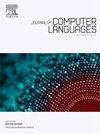新手建模者对令牌动画过程模型的主观理解与交互
IF 1.8
3区 计算机科学
Q3 COMPUTER SCIENCE, SOFTWARE ENGINEERING
引用次数: 0
摘要
流程建模是有效(业务)流程管理的基础。新手建模者对过程模型的理解和学习技术的有效集成提出了关键的挑战,这些挑战可以通过可视化、动画和仿真技术的应用来解决。在本研究中,我们研究了部署令牌动画过程模型的新手建模者的经验和看法,利用119名专业为商业管理和商业工程的大学生的数据,他们回答了基于这些模型的理解问题。我们专注于通过利用技术采用模型(TAM)结构来调查感知理解,使用偏最小二乘法来验证基于TAM的扩展研究模型。我们还从受访者对开放性问题的回答中分析定性数据,以提取代码和主题,以完成研究模型的发现。结果证实了令牌动画过程模型作为一种学习技术是有用和首选的。代币通过结合可视化、动画和模拟功能来增强认知促进,从而提高客观和感知理解。我们将过程模型的理解决定因素扩展为感知享受,并表明情绪状态在使用代币进行教学时也很重要。超过80%的参与者报告了对使用代币动画过程模型的明确偏好,证实了学生的高接受度。我们的研究还确定了在教育中使用动画代币的增强建议和潜在限制。最后讨论了进一步的理论和实践意义。本文章由计算机程序翻译,如有差异,请以英文原文为准。
Novice modelers’ subjective comprehension and interaction with token-animated process models
Process modeling is fundamental for effective (business) process management. Comprehension of process models by novice modelers and the effective integration of learning technologies present crucial challenges that can be addressed through the application of visualization, animation, and simulation techniques. In this study, we examine the experiences and perceptions of novice modelers deploying token-animated process models, drawing upon data from 119 college students specializing in business management and business engineering who answered comprehension questions based on these models. We concentrate on investigating perceived understanding through the utilization of Technology Adoption Model (TAM) constructs, employing Partial Least Square to validate an extended research model based on TAM. We additionally analyze qualitative data from respondents' answers to open questions to extract codes and themes that complete the research model's findings. The results confirm that token-animated process models are useful and preferred as a learning technique. Tokens enhance cognitive facilitation by incorporating visualization, animation, and simulation functionalities, resulting in improved objective and perceived comprehension. We extend the comprehension determinants of process models with perceived enjoyment and show that emotional states are also important in the utilization of tokens for teaching purposes. Over 80 % of participants reported a clear preference for using token-animated process models, confirming high levels of student acceptance. Our study also identified recommendations for enhancement and potential limitations associated with the use of animated tokens in education. Further theoretical and practical implications are finally discussed.
求助全文
通过发布文献求助,成功后即可免费获取论文全文。
去求助
来源期刊

Journal of Computer Languages
Computer Science-Computer Networks and Communications
CiteScore
5.00
自引率
13.60%
发文量
36
 求助内容:
求助内容: 应助结果提醒方式:
应助结果提醒方式:


